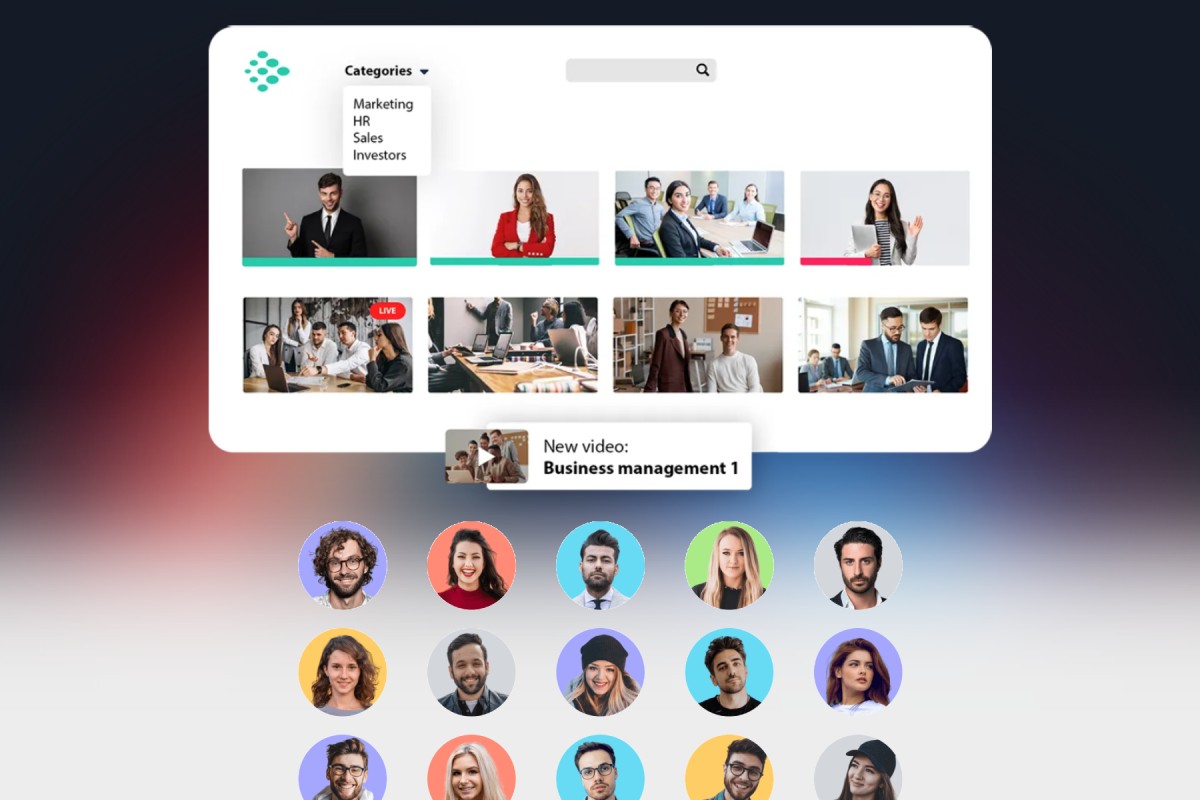

In the age of social media and digital technology, employee-generated video content has become a powerful tool for organizations to engage with their audience and showcase their company culture. With the rise of video platforms like YouTube, TikTok, and Instagram, employees are now more than ever before, creating and sharing videos related to their workplace. While this trend presents numerous benefits for businesses, it also brings challenges in terms of managing the content and ensuring it aligns with the company's values and goals. Hence, effective management of employee-generated video content has become crucial for organizations to maintain their brand image and reputation. In this article, we will delve into the importance of managing employee-generated video content, the benefits it offers, and the strategies that can be implemented to effectively manage this type of content. By the end of this article, readers will have a comprehensive understanding of the key elements involved in managing employee-generated video content and how it can contribute to the success of their organization.
WHAT IS EMPLOYEE-GENERATED VIDEO CONTENT?

Employee-generated video content is a rapidly growing form of digital media that has become an integral part of modern businesses. It refers to videos that are created and shared by employees, rather than the company itself. This type of content is typically created on smartphones, tablets, or other devices that are easily accessible to employees, making it a cost-effective and efficient way to communicate and engage with audiences.
But what exactly is employee-generated video content, and why is it gaining popularity? In simple terms, it is any video content that is created, shared, and consumed by employees within an organization. This can include anything from behind-the-scenes footage, product demonstrations, team-building activities, to showcasing company culture and values.
One of the main reasons why employee-generated video content is becoming increasingly popular is due to its authenticity. In today's digital age, consumers are inundated with branded content and advertisements, making it challenging for companies to stand out and connect with their target audience. Employee-generated videos, on the other hand, offer a refreshing change of pace as they provide an unfiltered and genuine look into the company and its employees.
Moreover, employee-generated video content can also be a powerful tool for employee engagement and internal communication. By involving employees in the content creation process, companies are able to foster a sense of ownership and pride among their workforce. This, in turn, can lead to increased employee satisfaction and loyalty, ultimately resulting in a positive impact on the company's bottom line.
Another significant benefit of employee-generated video content is the ability to manage and control the content more effectively. With employee-generated video content, organizations have the opportunity to set guidelines and standards for what can be shared and ensure that it aligns with the company's values and brand image. This helps to maintain a consistent message and prevent any potential reputational risks that may arise from inappropriate or unauthorized content. Additionally, by managing employee-generated video content, organizations can also track and monitor the performance and impact of these videos, allowing them to make data-driven decisions and optimize their video content strategy. Overall, effective management of employee-generated video content can result in a more cohesive and impactful video presence for the organization.
ENHANCE INTERNAL COMMUNICATIONS THROUGH VIDEO

In today's digital age, companies are constantly seeking innovative ways to enhance internal communications and foster a positive employee experience. One powerful tool that has emerged as a game-changer in this realm is video. Leveraging video in internal communications can significantly transform the way information is shared and received within an organization. With the ability to capture attention, convey complex messages effectively, and evoke emotions, video has become an invaluable asset for strengthening company culture and improving internal communication strategies. Whether it's through informative training videos, engaging company-wide announcements, or interactive virtual town halls, incorporating video management into internal communications can cultivate a more connected and informed workforce, ultimately leading to higher employee engagement and a more cohesive company culture.
FOSTER A POSITIVE COMPANY CULTURE

Creating a positive company culture is essential for fostering employee engagement, productivity, and overall satisfaction. It starts with establishing clear values and a shared vision that aligns with the organization's mission. Encouraging open and transparent communication channels promotes collaboration and strengthens relationships among team members. Providing opportunities for professional development and recognizing employee achievements not only boosts morale but also demonstrates a commitment to individual growth. In addition, promoting work-life balance and wellness initiatives shows a genuine concern for employee well-being. By prioritizing the employee experience and integrating these principles into the fabric of the organization, a positive company culture can be nurtured, resulting in a motivated workforce and a thriving, supportive work environment.
EMPOWER EMPLOYEES TO SHARE EXPERIENCES

In order to further enhance the employee experience and strengthen internal communications, organizations should consider empowering employees to share their experiences through the use of video content. Video has become an increasingly popular and effective medium for communication, allowing employees to express their thoughts, ideas, and insights in a visual and engaging manner. By providing employees with the tools and resources for video creation and management, companies can tap into the power of storytelling and enable employees to showcase their unique perspectives and experiences. This not only fosters a sense of belonging and connection among team members but also promotes authenticity and transparency within the organization. Implementing a robust video management system that facilitates the sharing and organization of employee-generated video content can further streamline the process and ensure that these valuable insights are easily accessible to the entire workforce. By embracing employee-generated video content, companies can leverage the power of technology to strengthen company culture, amplify internal communications, and ultimately create a more engaged and connected workforce.
STREAMLINE VIDEO MANAGEMENT PROCESSES

To effectively streamline video management processes, organizations can leverage advanced video management platforms. These platforms provide a centralized hub where all employee-generated video content can be stored, organized, and accessed. With features like automated tagging and categorization, video management platforms simplify the process of indexing and searching for specific videos, saving valuable time and effort. Additionally, these platforms often offer secure permissions and access controls, ensuring that only authorized individuals can view and share sensitive company content. By adopting a comprehensive video management solution, organizations can efficiently manage large volumes of employee-generated videos, enhance collaboration, and foster a strong company culture centered around effective internal communications and employee experience.
HARNESS THE POWER OF STORYTELLING
Storytelling is a powerful tool that organizations can harness to enhance employee experience, internal communications, and company culture. By incorporating storytelling techniques into internal videos, organizations can effectively engage and inspire employees, creating a sense of connection and belonging. Whether it's sharing personal anecdotes, highlighting success stories, or showcasing the impact of a particular project, storytelling adds a human element to the corporate environment, making information more relatable and memorable. It also fosters open communication, encourages collaboration, and strengthens the overall company culture. By embracing the power of storytelling, organizations can create compelling video content that resonates with employees, ultimately driving engagement, productivity, and a positive work environment.
IN CONCLUSION
The use of employee-generated video content can be a valuable tool for companies looking to engage with their audience and showcase their company culture. By setting clear expectations and guidelines, providing proper training and resources, and consistently monitoring and evaluating content, companies can effectively manage this type of content and reap the benefits. Embracing employee-generated video content can lead to increased employee satisfaction, improved brand image, and a stronger connection with consumers. As with any new strategy, it is important to approach it with a professional mindset and utilize best practices to ensure success.
Enter Teyuto, a platform designed to streamline and enhance your organization's video content journey. With Teyuto, managing, creating, and optimizing employee-generated videos becomes a seamless experience. Empower your team to produce compelling content that aligns with your company's values and engages your audience effectively. Teyuto not only simplifies the process but also maximizes the impact of your visual storytelling, ensuring that your organization stands out in the digital landscape. Elevate your video content strategy with Teyuto and embark on a journey towards a more connected, authentic, and engaging company narrative.
FAQ
How can organizations effectively manage employee-generated video content to ensure it aligns with the company's values and messaging?
Organizations can effectively manage employee-generated video content by implementing clear guidelines and policies regarding content creation. This includes providing training and resources on the company's values and messaging, establishing a review process to ensure alignment, and promoting open communication between employees and management. Regular feedback and constructive criticism can help guide employees in creating content that reflects the company's values. Additionally, organizations can leverage technology, such as content management systems, to monitor and track employee-generated videos, allowing for better control and oversight. Ultimately, a proactive approach to managing employee-generated video content can help ensure alignment with the company's values and messaging.
What strategies can be implemented to encourage employees to create and share video content that promotes the organization's brand and culture?
To encourage employees to create and share video content that promotes the organization's brand and culture, several strategies can be implemented. First, provide training and resources on video creation, editing, and storytelling to empower employees with the necessary skills. Next, establish a clear brand and culture messaging framework to guide employees in creating content that aligns with the organization's values. Recognize and reward employees who create and share quality content, fostering a sense of ownership and pride. Additionally, create a collaborative and supportive environment where employees feel comfortable expressing their ideas and creativity. Finally, leverage internal communication channels to actively promote and share employees' video content to increase visibility and engagement.
How should organizations handle employee-generated video content that may be controversial or sensitive in nature?
Organizations should establish clear guidelines and policies regarding employee-generated video content that addresses controversial or sensitive subjects. They should encourage open communication and provide avenues for employees to express their opinions while also maintaining a respectful and inclusive environment. It is essential to review and assess the content to ensure it adheres to the organization's values and does not violate any legal or ethical standards. If necessary, organizations should provide constructive feedback or training to employees to promote responsible content creation. Ultimately, organizations should strike a balance between allowing employee expression and maintaining a positive and professional image.
What tools or platforms are available for organizations to efficiently collect, review, and distribute employee-generated video content?
There are platforms available for organizations to efficiently collect, review and distribute employee-generated video content. Among these, some of the best video management systems include Teyuto, which offers features for uploading, organizing and sharing videos. In addition, collaboration platforms such as Microsoft Teams and Slack allow employees to easily share videos within a team or organization. Video editing tools such as Adobe Premiere Pro and iMovie can be used to edit and enhance employee-generated videos before distribution. Finally, social media platforms such as YouTube, LinkedIn, and Facebook can be used to share and distribute videos to a wider audience.
How can organizations provide feedback and recognition to employees who contribute valuable video content, while also maintaining quality control and consistency in messaging?
Organizations can provide feedback and recognition to employees who contribute valuable video content by implementing a structured feedback system. This can include regular reviews and evaluations by supervisors or designated team members. Additionally, recognition can be given through internal communication channels such as company newsletters or social media platforms. To maintain quality control and consistency in messaging, organizations should establish clear guidelines and standards for video content creation. This can involve providing training and resources to employees, conducting regular quality checks, and ensuring that messaging aligns with the organization's brand and objectives.


Enjoyed this read?